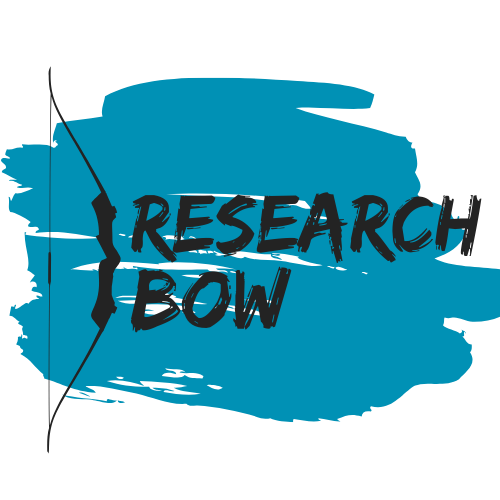Another month, another methodology. We have loved talking to our friends and colleagues on the PGR cohort to find out more about their research, and this instalment in our blog series, Tell Us About Your Methodology, is no different. Here is our interview with 2nd year PhD candidate, Koraima Sotomayor-Enriquez (Clinical Psychology).
What methodology are you using?
I am using Experience Sampling Methodology (ESM), in combination with other methods.
What are the key aspects of this methodology?
In general terms, ESM uses structured self-report diaries to assess mood, symptoms, context, and appraisals as they occur in our daily lives. The basic idea behind the method is to capture the moment-to-moment changes that we might experiences with quick and targeted assessments (e.g. How happy are you feeling, right now?). These momentary assessments, which are often now recorded on smartphone apps, provide a more comprehensive picture of individuals in real-time in real-life settings. Therefore, ESM allows to explore the naturally occurring changes and their effects on any variable of interest. ESM is rooted in ecological psychology, which emphasises experiences as they occur in the real-world context.
Why did you choose this methodology?
No method is perfect to answer your research question. However, some are more useful to understand your variables of interest. In my personal case, from the start of my research journey, I have been interested in the role that the context plays in psychological phenomena. From a developmental psychopathology approach, the context is relevant for understanding why some people are more resilient that others, or why they are better at understanding thoughts and intentions than their peers. The interplay between the context and psychological mechanisms could lead to multiple outcomes, including the development or not of mental health difficulties. Therefore, to better understand the bi-directional links between environment and psychological mechanisms we need a method that appraises these factors in real-life settings. Luckily, one of the main characteristics of ESM is the assessments of individuals in their normal daily life. This is one of the reasons I chose this methodology to answer my research questions, which mainly focus on the longitudinal changes of psychological variables and its interaction with context and how this association plays a role in our day-to-day mental health.
Why would you recommend this methodology?
ESM focuses on the subjective experience of the individual and it could be easily implemented using a mobile phone. Usually, the participants would need to download an app where they can provide answers to the momentary assessments with a quick tap on their phones. The use of mobile phone apps decreases the burden for researchers and participants, who would no longer need to attend several appointments during the study. Additionally, I believe that in order to understand individual differences, we need to capture the dynamic interaction of different psychological, social, and contextual aspects. While many methods provide a range of tools to do this, ESM is suitable for questions regarding thoughts, beliefs, experiences, and context. The dynamic nature of psychological phenomena is mainly based on the idea that we are prone to change and adaptation. Therefore, the use of ESM could help to capture any changes and interactions of psychological mechanisms in a daily basis.
What additional training / help was needed to use your methodology?
If you are more into video trainings and workshops, check out:
- “The Analysis of Intensive Longitudinal Data” an APA Science Training Sessions from CenterStat (https://centerstat.org/apa-ild/) [This is free!]
- KU Leuven REAL Workshop, which covers the basics of ESM design and its rationale (https://www.kuleuven.be/samenwerking/real/workshop/index.htm) [In-person, you need to pay a fee]
If you are more into reading:
- Bolger, N., & Laurenceau, J.-P. (2013). Intensive longitudinal methods: An introduction to diary and experience sampling research. Guilford [You can find it in the Main Library]
- Myin-Germeys, I., & Kuppens, P. (Eds.). (2021). The Open Handbook of Experience Sampling Methodology: A step-by-step guide to designing, conducting, and analyzing ESM studies. Leuven: Center for Research on Experience Sampling; Ambulatory Methods Leuven. [You can buy it on Amazon, or download it for free from the REAL website]
Also, any training from the CDCS is especially useful to implement later on in any ESM analyses.
Finally, I would also recommend reading:
- Christensen, T.C., Barrett, L.F., Bliss-Moreau, E. et al. A Practical Guide to Experience-Sampling Procedures. Journal of Happiness Studies 4, 53–78 (2003). https://doi.org/10.1023/A:1023609306024
- Kirtley OJ, Lafit G, Achterhof R, Hiekkaranta AP, Myin-Germeys I. Making the Black Box Transparent: A Template and Tutorial for Registration of Studies Using Experience-Sampling Methods. Advances in Methods and Practices in Psychological Science. 2021;4(1). doi:10.1177/2515245920924686 [Check out their OSF site, they have great resources!]
What are the challenges of using this methodology?
As far as I know, there is no evidence of direct hazards of self-reported momentary assessments reported in the literature. However, one of the main limitations of using ESM is compliance. You would ask your participant to complete brief assessment around 4 to 8 times per day. This could be quite easy for some participants, while for others it could be quite disruptive and even daunting. Compliance issues could lead to high percentages of missing data which could significantly impact your study analysis and results. Additionally, some available apps for ESM will only be compatible with certain types of devices (e.g. only for Android but not iOS, and vice versa) and they will not provide a lot of modifiable features. Not being able to fully customise your assessment may hinder the use of ESM for certain populations (e.g. people who need a bigger typography, etc.)
What advice can you give to other people using this methodology?
Certainly, I am not an expert in this methodology, but one piece of advice that I would like to give is: go back to the basics. This methodology sounds fascinating, and nowadays you can easily find scripts (usually in R) for conducting ESM analyses. But, when it comes to interpreting all the fancy stats, you will need to be aware of the scope of those analyses and what information they are telling you. Are you describing between- or within-person associations? What does it mean that one of your predictors (beta 1) has a significant interaction with one of your control variables (beta 2)? Are you describing raw data or the best-linear-based estimates? In my opinion, for ESM analyses it is useful to understand the basic premises of the linear models, including its assumptions. Also, and not as a trivial matter, you need to ask yourself if this method is *really* suitable for your research question.






Thanks for sharing this interesting methodology as well as those useful resources! One thing I am thinking about is the differences between ESM and EMA (ecological momentary assessment). EMA seems similar to ESM but are there any primary differences between these two methods?
Hi Yanming! I am glad you found the blog interesting! About your question: ESM and EMA are in principle the same thing. ESM (Experience Sampling Methodology) is a broader term to define the measurement approach (momentary changes in daily life) as a design methodology, whilst EMA (Ecological Momentary Assessments) describes the different types of tools/techniques you can used in the ESM (e.g. physical structure diaries, app-based momentary assessments, etc).
I hope this clarifies it a bit more! Feel free to email me if you have any other questions or if you want to have a quick chat.